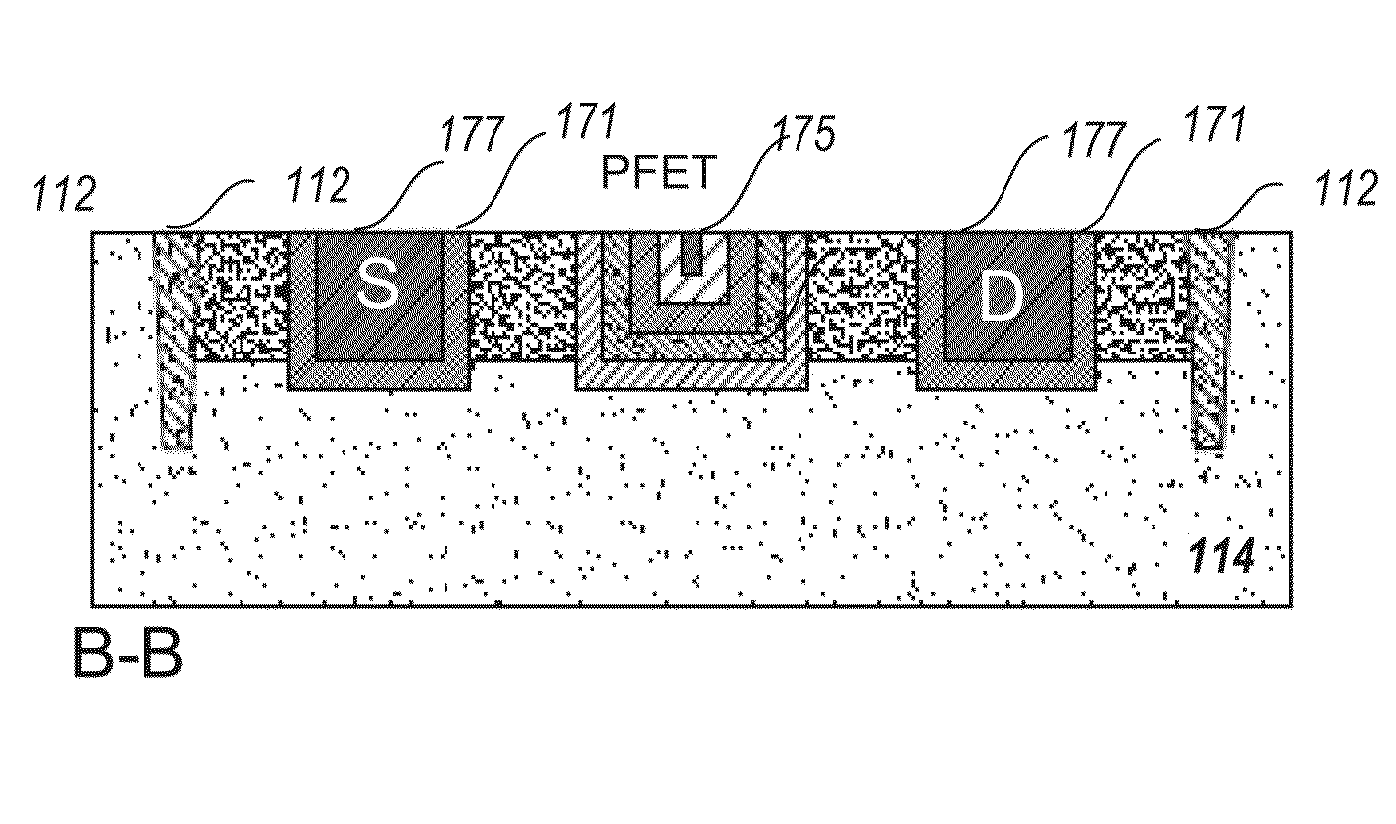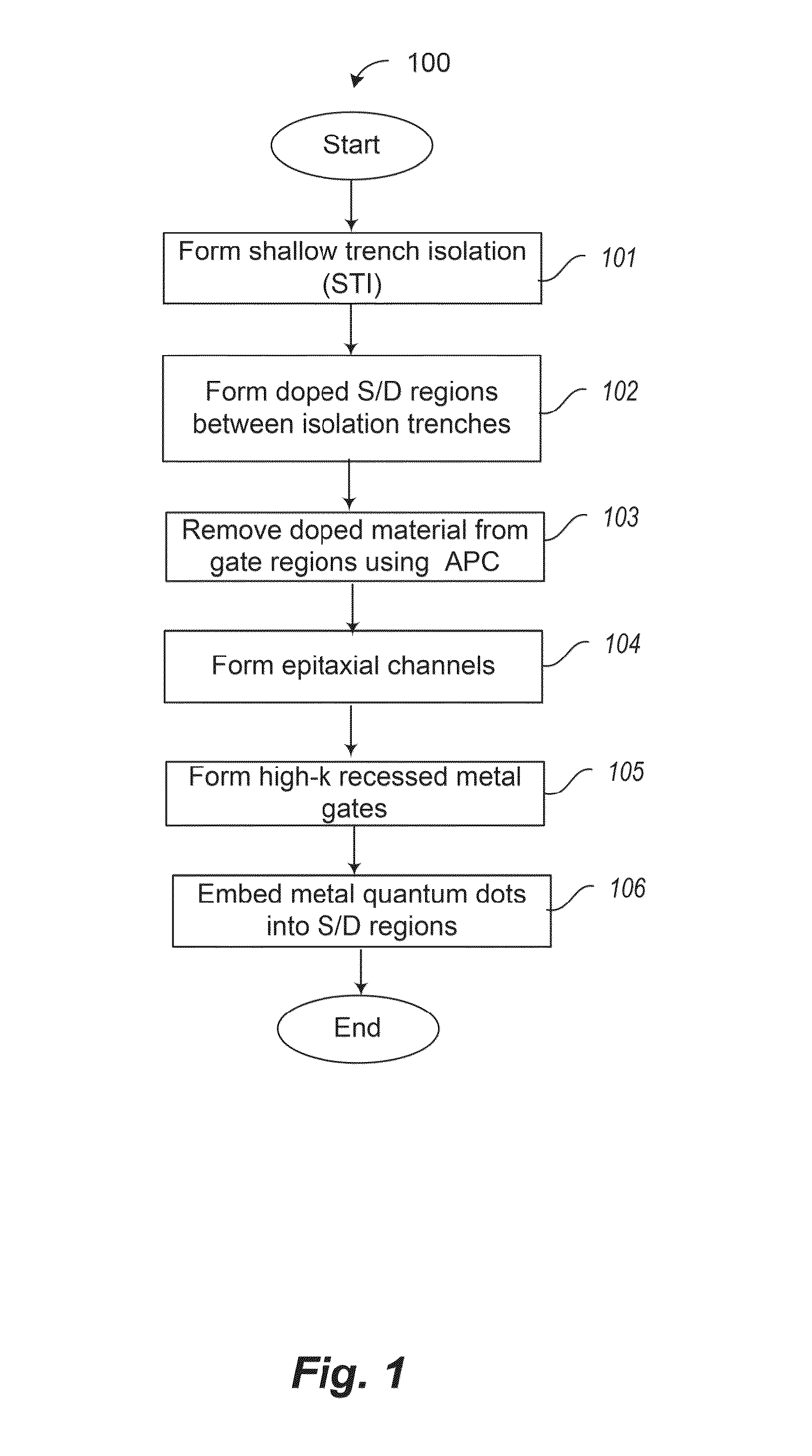Threshold adjustment for quantum dot array devices with metal source and drain
a quantum dot array and threshold adjustment technology, applied in semiconductor devices, semiconductor/solid-state device testing/measurement, electrical apparatus, etc., can solve the problems of increasing difficulty in maintaining precise control of various electrical characteristics of bulk semiconductor devices, and achieve the effect of improving the performance of certain parameters and precise control of conductive properties of crystalline materials
- Summary
- Abstract
- Description
- Claims
- Application Information
AI Technical Summary
Benefits of technology
Problems solved by technology
Method used
Image
Examples
first embodiment
[0054]FIG. 1 shows a high-level sequence of processing steps in a method 100 that can be used to create metal quantum dot array devices, according to a The devices described herein incorporate metal quantum dots into the source and drain regions of MOSFET transistors.
[0055]At 101, shallow trench isolation (STI) regions are formed to electrically isolate individual transistors as is known in the art. The silicon substrate is then recessed below the STI regions.
[0056]At 102, charge reservoirs in the source and drain regions are formed by doping areas of a silicon substrate between pairs of isolation trenches. A first method of doping uses conventional ion implantation. A second method of doping uses in-situ epitaxial growth.
[0057]At 103, doped silicon is selectively removed from the gate regions while remaining in the source and drain regions.
[0058]At 104, epitaxial channels are formed between the source and drain regions.
[0059]At 105, a high-k gate is formed that includes a gate die...
second embodiment
[0072]The ion implantation process shown and described in FIGS. 3A-3D is sometimes preferred for minimum dimensions (i.e., gate lengths) below 20 nm. At such small geometries, damage caused by ion implantation may result in severe degradation of the silicon crystalline structure in the source and drain regions. Sometimes the degradation is so great that it cannot be healed sufficiently by a later annealing process. In such cases, an alternative doping method can be substituted for ion implantation. One such alternative, source and drain doping during in-situ epitaxial growth, is presented as the process step 102, shown and described in detail in FIGS. 4A-4D.
[0073]FIG. 4A shows a sequence of process steps that can be used to form an epitaxial n-doped carrier reservoir 150 and epitaxial p-doped carrier reservoirs 155.
[0074]At 146, regions of the substrate 114 that are to be epitaxially doped in situ with negative ions (carrier reservoirs 150) are masked, preferably using a silicon nit...
PUM
| Property | Measurement | Unit |
|---|---|---|
| aspect ratio | aaaaa | aaaaa |
| gate lengths | aaaaa | aaaaa |
| depth | aaaaa | aaaaa |
Abstract
Description
Claims
Application Information
 Login to View More
Login to View More - R&D
- Intellectual Property
- Life Sciences
- Materials
- Tech Scout
- Unparalleled Data Quality
- Higher Quality Content
- 60% Fewer Hallucinations
Browse by: Latest US Patents, China's latest patents, Technical Efficacy Thesaurus, Application Domain, Technology Topic, Popular Technical Reports.
© 2025 PatSnap. All rights reserved.Legal|Privacy policy|Modern Slavery Act Transparency Statement|Sitemap|About US| Contact US: help@patsnap.com



